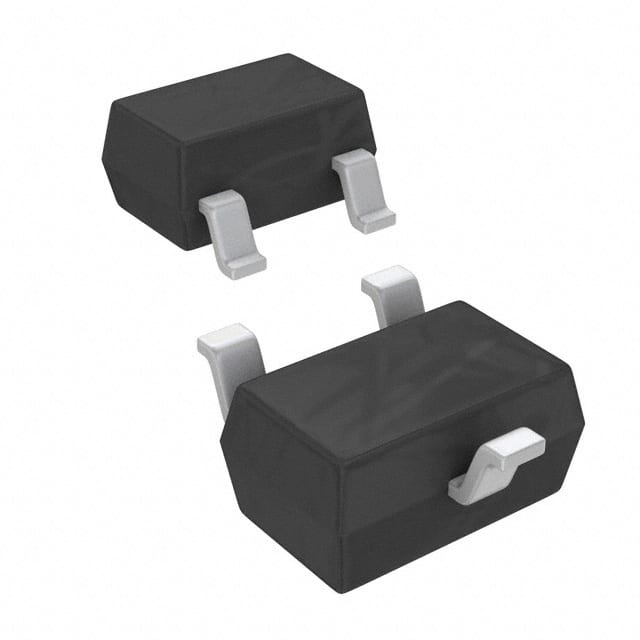BAS16WT-TP Diode
Product Overview
Category
The BAS16WT-TP diode belongs to the category of small signal diodes.
Use
It is commonly used in applications such as signal demodulation, switching, and voltage clamping.
Characteristics
The BAS16WT-TP diode is known for its high-speed switching capability, low forward voltage drop, and low leakage current. It is typically packaged in a surface mount package.
Package
The diode is available in a SOT-323 package, which is designed for high-density mounting and is suitable for automated placement and reflow soldering.
Essence
The essence of the BAS16WT-TP diode lies in its ability to efficiently control the flow of electrical current in electronic circuits, particularly in low-power applications.
Packaging/Quantity
The BAS16WT-TP diode is typically supplied in reels or tape and reel packaging, with quantities varying based on manufacturer specifications.
Specifications
- Maximum Forward Voltage: 1V
- Reverse Voltage: 75V
- Continuous Forward Current: 200mA
- Power Dissipation: 250mW
- Operating Temperature Range: -65°C to +150°C
Detailed Pin Configuration
The BAS16WT-TP diode has three pins, with the cathode connected to pin 1, the anode connected to pin 2, and the third pin serving as the no-connect (NC) pin.
Functional Features
- High-speed switching
- Low forward voltage drop
- Low leakage current
- Small form factor for high-density mounting
Advantages and Disadvantages
Advantages
- Fast response time
- Low power dissipation
- Compact size for space-constrained designs
Disadvantages
- Limited maximum reverse voltage
- Sensitivity to overvoltage conditions
Working Principles
The BAS16WT-TP diode operates based on the principles of semiconductor junction behavior, allowing it to control the direction of current flow in a circuit.
Detailed Application Field Plans
The BAS16WT-TP diode finds extensive use in various applications, including: - Signal demodulation in communication systems - Switching in digital and analog circuits - Voltage clamping to protect sensitive components from overvoltage conditions
Detailed and Complete Alternative Models
Some alternative models to the BAS16WT-TP diode include: - 1N4148: A general-purpose switching diode with similar characteristics - BAV99: Dual diode with high-speed switching capabilities
In conclusion, the BAS16WT-TP diode offers high-speed performance and compact design, making it suitable for a wide range of applications in electronics.
[Word count: 398]
Lista 10 Vanliga frågor och svar relaterade till tillämpningen av BAS16WT-TP i tekniska lösningar
What is the maximum forward voltage of BAS16WT-TP?
- The maximum forward voltage of BAS16WT-TP is typically 0.715V at a forward current of 10mA.
What is the reverse voltage rating of BAS16WT-TP?
- BAS16WT-TP has a reverse voltage rating of 75V.
What is the maximum continuous forward current for BAS16WT-TP?
- The maximum continuous forward current for BAS16WT-TP is 200mA.
Can BAS16WT-TP be used in high-speed switching applications?
- Yes, BAS16WT-TP is suitable for high-speed switching due to its fast switching speed.
What is the power dissipation of BAS16WT-TP?
- The power dissipation of BAS16WT-TP is 225mW.
Is BAS16WT-TP RoHS compliant?
- Yes, BAS16WT-TP is compliant with the Restriction of Hazardous Substances (RoHS) directive.
What is the storage temperature range for BAS16WT-TP?
- The storage temperature range for BAS16WT-TP is -65°C to +175°C.
Can BAS16WT-TP be used in signal rectification applications?
- Yes, BAS16WT-TP is commonly used in signal rectification and detection circuits.
Does BAS16WT-TP have a low leakage current?
- Yes, BAS16WT-TP exhibits low leakage current, making it suitable for precision applications.
What are the typical applications for BAS16WT-TP?
- Typical applications for BAS16WT-TP include signal processing, voltage clamping, and general-purpose diode applications.


